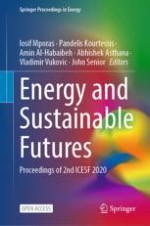6.1 Introduction
6.2 Proposed Architecture
6.3 Experimental Setup
Dataset | Properties | |||
|---|---|---|---|---|
# App. | \( {T}_{s} \) | \( {T} \) | Appliance type | |
REDD-1 | 18 (17) | 3 s | 7d | One state/multi state/non-linear |
REDD-2 | 9 (10) | 3 s | 11d | One state/multi state |
REDD-3 | 20 (18) | 3 s | 14d | One state/multi state/non-linear |
REDD-4 | 18 (16) | 3 s | 14d | One state/multi state/continuous/non-linear |
REDD-6 | 15 (14) | 3 s | 12d | One state/multi state/continuous/non-linear |
6.4 Experimental Results
Dataset | REDD-1 (%) | REDD-2 (%) | REDD-3 (%) | REDD-4 (%) | REDD-6 (%) | AVG (%) |
|---|---|---|---|---|---|---|
One versus All | 71.38 | 86.00 | 70.44 | 68.21 | 87.17 | 76.64 |
Multi-output | 71.87 | 85.65 | 71.69 | 67.18 | 85.03 | 76.28 |
